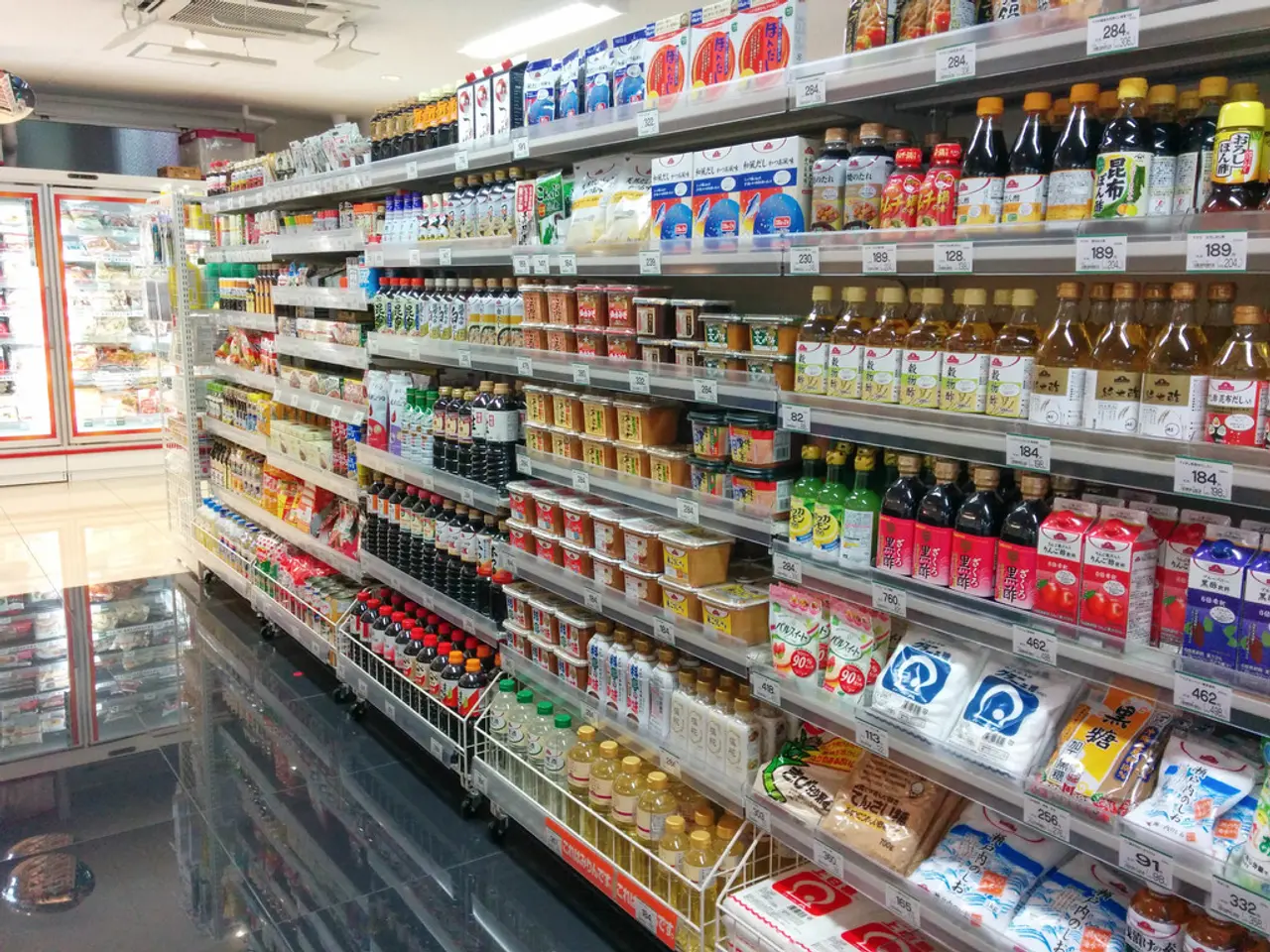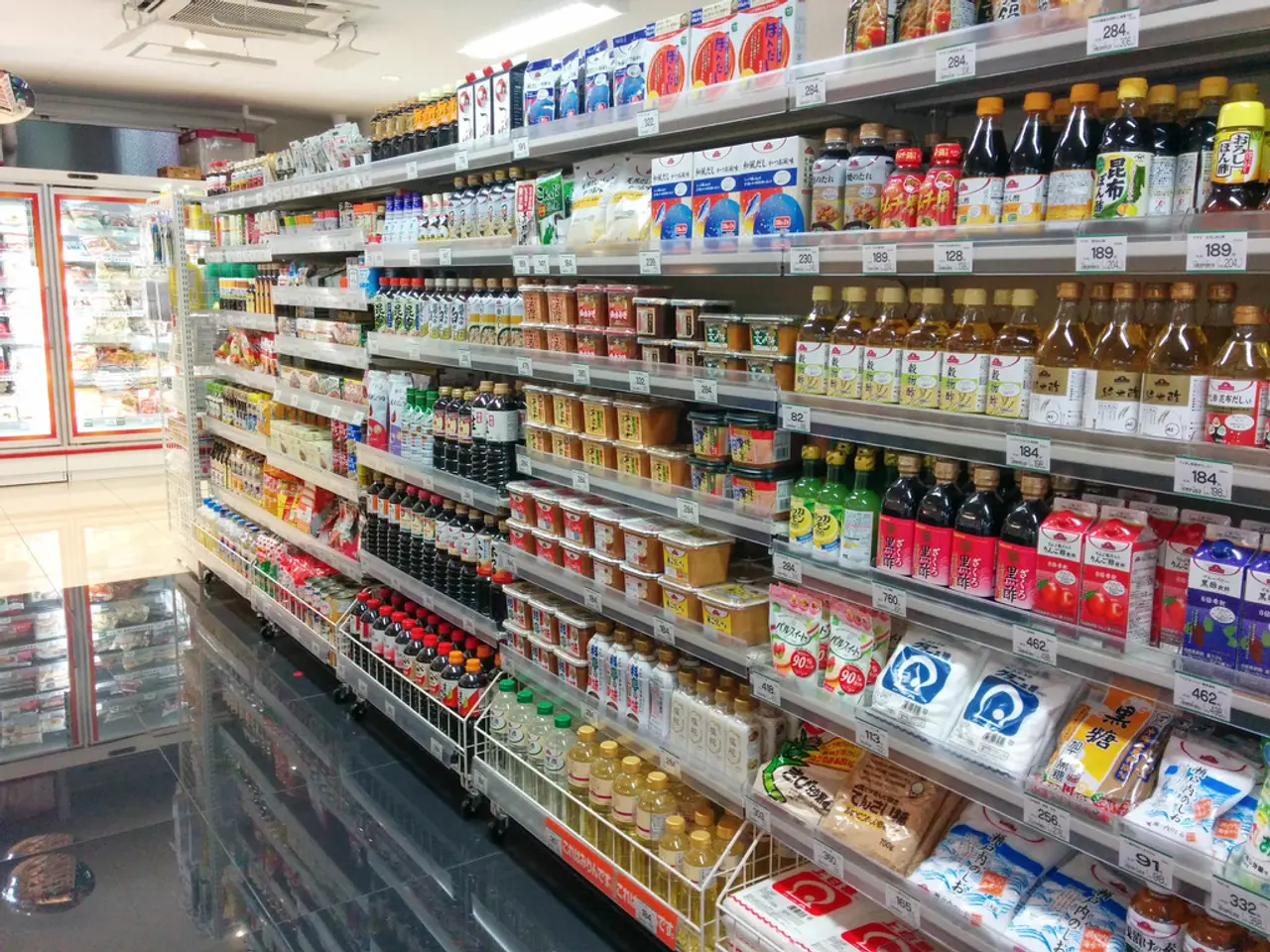Retail Businesses Struggling with Import Tariff Uncertainties
In the face of escalating inflation and economic uncertainty, consumers worldwide are feeling the pinch of increased grocery costs, according to the latest survey and economic data.
The July edition of NRF's Monthly Economic Review, authored by Jack Kleinhenz, chief economist at the National Retail Federation (NRF), states that economic uncertainty is pervasive. This uncertainty is driven by various factors, including tariffs, inflation, and supply chain challenges.
These factors have led to significant grocery price inflation. The Consumer Price Index (CPI) for food-at-home (groceries) rose 2.4% year-over-year as of June 2025, reflecting ongoing inflation pressures influenced by tariffs and supply chain constraints.
Tariffs are increasingly evident in inflation data, impacting the prices of groceries and many other consumer goods. These trade levies have pushed up costs for duty-affected commodities, with experts noting that tariff-driven price increases will likely grow as inventories from pre-tariff imports get consumed.
The 2025 Global Consumer Sentiment on Grocery Inflation Survey by Blue Yonder reveals that 85% of overall respondents are concerned about inflation's impact on grocery prices. In response, 65% of consumers report they would buy fewer grocery items to cope with price increases.
Additionally, around 71% of those detecting price hikes plan to adjust their buying habits, such as purchasing more discounted groceries, indicating behavioral changes driven by inflation pressures. Approximately one-third of consumers would prefer shopping based on promotions and discounts, and switching to private label brands.
The policy environment, including tariffs from recent trade tensions, has created economic uncertainty and contributed to shrinking consumer confidence and reduced spending. This environment heightens concerns about inflation and its effects on purchasing power.
For instance, the U.S. Census Bureau reported an overall retail and foodservice sales dip of 0.9% and a grocery sales slide of 0.8% from April to May. Anxiety and confusion have taken center stage in the economy and financial markets due to uncertainty over public policy.
Despite some improvement in overall consumer sentiment in July 2025, inflation expectations remain subdued, and consumers continue to face higher grocery costs driven in part by supply chain disruptions and tariff-induced price changes.
The National Retail Federation, an organization that advocates for retail success, employing 55 million working Americans and contributing $5.3 trillion to the annual GDP, is closely monitoring these developments. Fed officials are also keeping a close eye on the "inflation psychology" of consumers, specifically how their expectations about future inflation influence their current spending and savings decisions.
Consumers in the United States, the U.K., and the Middle East feel global tariffs are the leading cause of rising prices. The CPI for food at home rose 0.3% from May to June and was up 2.2% on a 12-month basis, according to the latest government data.
In response to these price increases, 42% of consumers would shop at discount and wholesale stores in an effort to save money. The ongoing challenges in the grocery sector underscore the need for consumers and policymakers to stay vigilant and adapt to these changing economic conditions.
In the context of the given text, two sentences that contain the words 'supply chain', 'private label', 'industry', 'finance', and 'business' could be:
"Amidst supply chain challenges and tariff-induced price changes, businesses in the grocery industry are experiencing increased financial pressures."
"In response to rising grocery costs, a significant number of consumers (around one-third) are considering switching to private label brands as a strategy to manage their expenses."




